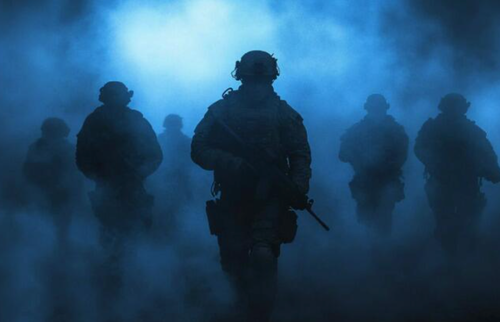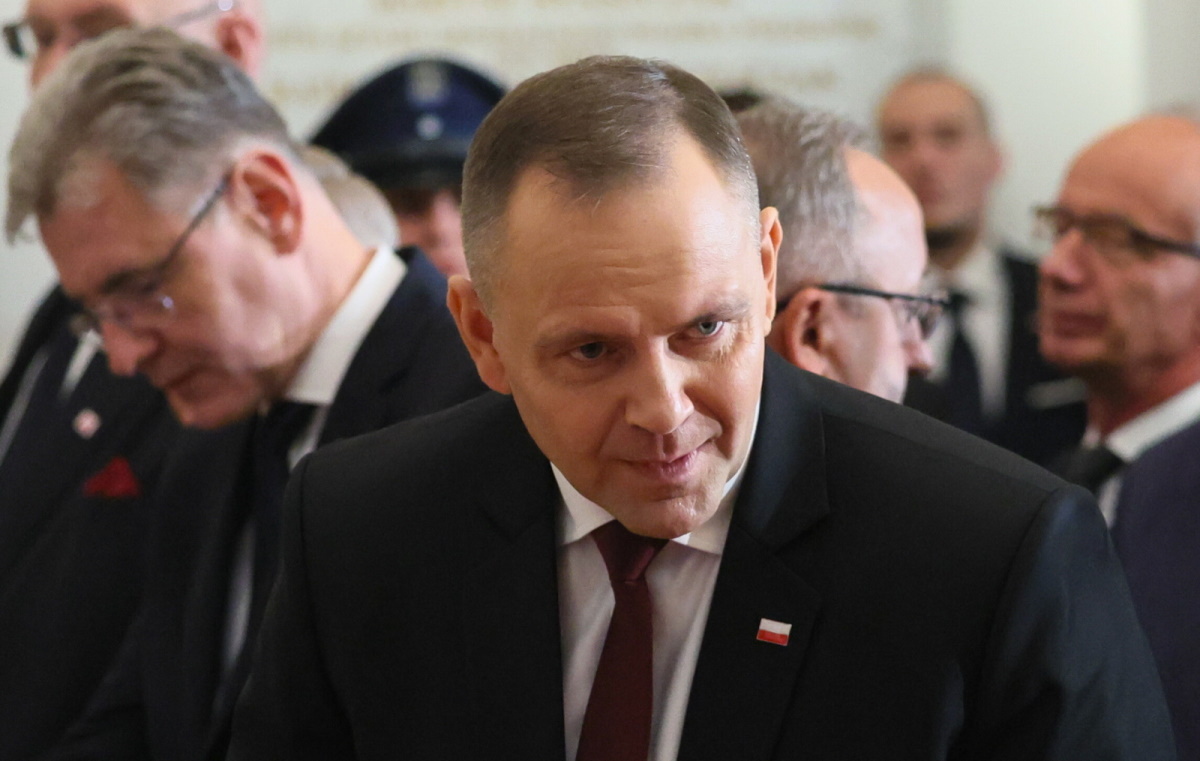
Третья мировая война уже здесь?
Автор Jay Solomon via FP.com,
"The"Ось потрясений«Мы находимся на марше, и США должны выяснить, как реагировать».

Если вы чувствуете, что мир горит прямо сейчас, это потому, что он горит. От Украины до Сирии и Корейского полуострова все более широкий спектр конфликтов вызывает вопросы у экспертов в области обороны: Опять 1914 год? 1939? Третья мировая война уже началась, и мы только сейчас ее выясняем?
Для отставного генерал-лейтенанта Х.Р. Макмастера, который служил вторым советником по национальной безопасности Дональда Трампа с 2017 по 2018 год, ответ ясен.
"" Я думаю, что мы находимся на пороге мировой войны, - сказал Макмастер. Свободная пресса. Происходит экономическая война. В Европе и на Ближнем Востоке идут настоящие войны, а в Тихом океане надвигается война. И я думаю, что единственный способ предотвратить дальнейшее каскадирование этих войн — убедить этих противников, что они не могут достичь своих целей с помощью силы. "
Это будет нелегко. Рассмотрим факты:
На Украине тысячи северокорейских солдат недавно присоединились к российским сухопутным войскам, чтобы поддержать вторжение президента Владимира Путина в страну. Тем временем Россия открыла новый фронт в войне, войдя на северо-восток Харьковской области, продолжая нападать на города Украины и блокировать ее порты.
Прекращение огня в Ливане при посредничестве США, которое вынудило террористическую группу «Хезболла» отступить от северной границы Израиля, демонстрирует признаки распада. Между тем, еврейское государство все еще ведет войну в секторе Газа, где остаются около 60 израильских и американских заложников. В прошлом месяце ВВС Израиля уничтожили большую часть систем противовоздушной обороны Ирана, оставив ядерные объекты Тегерана уязвимыми для будущих атак.
Повстанцы в Сирии недавно захватили ключевые районы страны, которые годами контролировались диктатором Башаром Асадом и его российскими и иранскими сторонниками. Теперь, когда эти повстанцы захватили Алеппо, они клянутся идти на Дамаск.
В Балтийском море следователи подозревают китайский корабль в саботаже критических подводных кабелей данных, которые связывали государства НАТО. Опасения по поводу агрессии КПК растут на фоне растущего консенсуса в Вашингтоне о том, что Китай победит США в Тихоокеанской войне, в основном из-за военно-морского превосходства Пекина.
А во вторник президент Южной Кореи кратко объявил военное положение, утверждая, что ему нужно отбиться от поддерживаемого Северной Кореей переворота во главе с оппозиционной партией. Массовые протесты заставили его отступить, и теперь ему грозит импичмент.
Эти войны, восстания и шпионские истории могут показаться несвязанными. Но на самом деле все они указывают на расширяющийся глобальный конфликт, в котором США и их союзники противостоят Китаю, России, Ирану и Северной Корее — государства, зацикленные на свержении Запада. Стратеги даже придумали броские прозвища для этой антиамериканской коалиции, назвав блок «Ось агрессоров» или «Ось потрясений». "
Филипп Зеликов, который был исполнительным директором Комиссии 9/11 и советником госсекретаря Кондолизы Райс с 2005 по 2007 год, является одним из тех, кто считает, что эти конфликты связаны. «Я думаю, что существует серьезная возможность того, что я называю всемирной войной», то есть мировой войной, которая не так скоординирована, как прошлые глобальные пожары. Нетрудно увидеть, как один из этих конфликтов переходит в другой. "
Поскольку Трамп готовится вступить в должность в следующем месяце, его основной внешнеполитической задачей должно быть предотвращение реальной полномасштабной Третьей мировой войны. Свободная прессаИли остановить его от метастазирования, если он уже здесь.
Для этого новоизбранному президенту придется укреплять альянсы с НАТО, Южной Кореей и Японией — партнерство, к которому Трамп уже проявил скептицизм. И ему нужно будет посмотреть на ряд американских противников, включая Путина, президента Китая Си Цзиньпина и северокорейского диктатора Ким Чен Ына — деспота, за которого Трамп выразил презрение и восхищение.
 Полиция охраняет здание Национального собрания в Сеуле, Южная Корея, 4 декабря 2024 года. (Джинтак Хан, Getty Images)
Полиция охраняет здание Национального собрания в Сеуле, Южная Корея, 4 декабря 2024 года. (Джинтак Хан, Getty Images)В то же время Трамп извлекает выгоду из своей готовности отказаться от прошлой политики и институтов США, которые помогли разжечь эти текущие конфликты. Это включает в себя оборонную промышленность, которая не производит нужное оружие, чтобы конкурировать с Китаем, или достаточное количество боеприпасов для вооружения Украины. По словам источников, оборонные стратеги в предыдущих администрациях США были слепы к шагам стран «Оси агрессоров» по расширению своей глобальной мощи, слишком сильно доверяя глобальным институтам, таким как Организация Объединенных Наций, которые были неспособны их контролировать.
Трамп со своими нетрадиционными советниками, такими как Илон Маск и Вивек Рамасвами, потенциально может революционизировать то, как США строят и проецируют власть. CEO SpaceX Маск, в частности, может жениться на американском военном истеблишменте с культурой запуска Силиконовой долины, чтобы производить в масштабе типы умных самолетов, беспилотников и подводных лодок, необходимых для сдерживания врагов Вашингтона.
Но желание Трампа встряхнуть Вашингтон и демонтировать многие из его институтов национальной безопасности сопряжено с огромным риском. Разрушение Пентагона, Госдепартамента и ФБР может сделать США и их союзников более уязвимыми, если эти институты станут неработоспособными или менее эффективными, заявили нынешние и бывшие чиновники. Свободная пресса.
"" Что ему понадобится, так это некоторая повестка дня, чтобы объединить мир после того, как он разъединяет вещи, - сказал Дэвид Ашер, старший научный сотрудник Института Хадсона, который курировал операции правительства США против России, Китая, Северной Кореи и Ирана в администрациях Джорджа Буша, Обамы и Трампа.
Угроза расширения глобального конфликта обусловлена факторами, напоминающими события до начала Первой мировой войны. Это включает в себя разрушение альянсов и торговых систем и появление разрушительных технологий, таких как самолеты, телефоны и механизированное оружие. Сегодня уже нет единого мнения о том, что свободная торговля сблизит страны и предотвратит будущие войны. А пандемия Covid-19 выявила опасность опоры на Китай в поставках медикаментов. Угрозы Трампа ввести высокие тарифы в отношении Китая и других стран также создают угрозу усиления конфликта.
"" «Когда вы изучаете экономическую историю, вы узнаете, что длинные циклы заканчиваются, а когда они заканчиваются, они заканчиваются войной», — сказал Ашер, который работал на Уолл-стрит и недавно проинформировал финансовые учреждения об угрозе глобального конфликта.
 Ракетная установка стреляет по силам сирийского режима в Хаме, Сирия, 4 декабря 2024 года. (перенаправлено с «Getty Images»)
Ракетная установка стреляет по силам сирийского режима в Хаме, Сирия, 4 декабря 2024 года. (перенаправлено с «Getty Images»)Макмастер и Зеликов заявили, что гражданская война в Сирии, начавшаяся почти 15 лет назад, должна была стать серьезным тревожным звонком для США, Европы и НАТО. Администрация Обамы пыталась свергнуть Асада с помощью дипломатии и переговоров, которые включали Россию и Иран, главных покровителей этого лидера. Но затем США и Европа были ошеломлены в 2015 году, когда Москва и Тегеран поддержали Асада как воздушными, так и наземными войсками.
"" Мы начали говорить о соперничестве великих держав и все такое, но на самом деле мы ничего не сделали, чтобы остановить эти тенденции, - сказал Зеликов, который сейчас является старшим научным сотрудником Института Гувера Стэнфордского университета.
Этот сирийский учебник теперь можно увидеть на Украине. Иран, Северная Корея и Китай поставляют оружие или технологии в Россию, в то время как поддерживаемые Ираном бойцы хуситов, как сообщается, находятся на украинском поле боя вместе с северокорейскими войсками.
Война на Ближнем Востоке, вызванная вторжением ХАМАСа в Израиль 7 октября 2023 года, также привлекла эту более широкую ось. Хуситы в поддержку ХАМАСа нападают на международные суда в критическом транзитном проливе Красного моря. И они получают руководство от Тегерана и Москвы, по словам нынешних и бывших американских чиновников.
На северной стороне пролива иранский генерал «руководит хуситами, используя российскую разведку», сказал Макмастер. Свободная пресса. На южной стороне есть иранский разведывательный корабль. У вас есть китайский порт, вы знаете? Я имею в виду, это не по ошибке. "
Как администрация Трампа будет противостоять этой ободренной оси? Значительный разрыв между внешнеполитическими стратегами может оказаться трудно преодолеть. В одном углу находятся ястребы и традиционные республиканские консерваторы, такие как советник по национальной безопасности Майк Вальц, номинант на пост госсекретаря Марко Рубио и назначенная послом ООН Элис Стефаник, которые призвали к мускулистой защите Pax Americana. Ожидается, что они будут настаивать на том, чтобы Трамп продолжал вооружать Украину, Израиль и Тайвань, и даже усиливать нашу военную поддержку для сохранения западного порядка.
 Украинский солдат стреляет из пулемета по российским беспилотникам 29 ноября 2024 года в Черниговской области, Украина. (Максим Кишка, Getty Images)
Украинский солдат стреляет из пулемета по российским беспилотникам 29 ноября 2024 года в Черниговской области, Украина. (Максим Кишка, Getty Images)На противоположной стороне находится изоляционистское крыло, отраженное в публичных размышлениях старшего сына Трампа, Дона-младшего, который 17 ноября написал в Твиттере о решении администрации Байдена предоставить Украине ракеты большой дальности:
Военно-промышленный комплекс, похоже, хочет убедиться, что они получат 3-ю мировую войну, прежде чем у моего отца будет шанс создать мир и спасти жизни. Нужно запереть эти триллионы. Жизнь проклята!!! Имбецилы!
Вице-президент Трампа Дж.Д. Вэнс и его советники, в том числе Такер Карлсон и Тулси Габбард, также считают, что перенапряжение американских военных привело к катастрофическим войнам США в Ираке и Афганистане и ненужным провокациям Запада в отношении Путина, которые вызвали его вторжение на Украину. Они утверждают, что отступление, а не расширение, является ключом к глобальному миру.
Некоторые доверенные лица Трампа рассказали Свободная пресса Они изучали политику США, которая вела к двум предыдущим мировым мирам. Они пришли к выводу, что Вашингтон был слишком снисходителен к гитлеровской Германии, ведущей ко Второй мировой войне, но слишком привержен европейским союзникам в начале 1900-х годов перед Первой мировой войной. И они считают, что Трампу нужно будет найти баланс между этими двумя позициями.
"" Я думаю, что вы должны извлечь уроки из обеих войн, - сказал Питер Тиль, технический инвестор и близкий союзник Трампа. Свободная пресса В прошлом месяце. Вы не можете иметь чрезмерное умиротворение, и вы также не можете ходить во сне в Армагеддон. В каком-то смысле это противоположные уроки. "
** **
Джей Соломон является журналистом-расследователем «Свободной прессы» и автором «Иранских войн». Следуйте за ним на X по адресу @FPJaySolomon и прочитайте его статью «Внутри битвы за внешнюю политику Трампа». "
Тайлер Дерден
Фри, 12/06/2024 - 23:25









